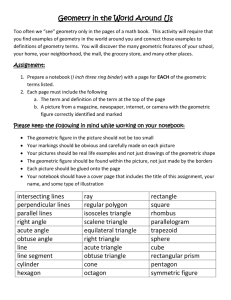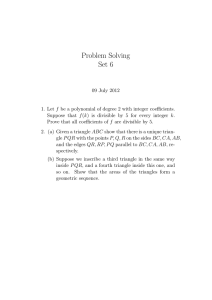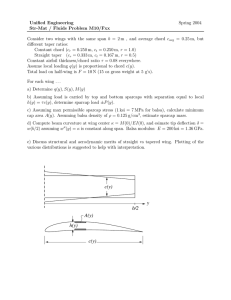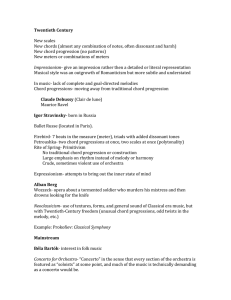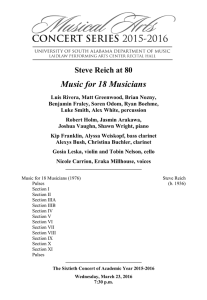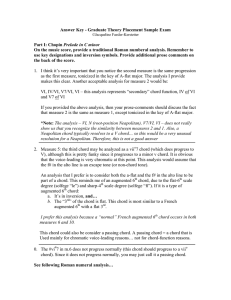Geometric series through time Archimedes and the parabola.
advertisement
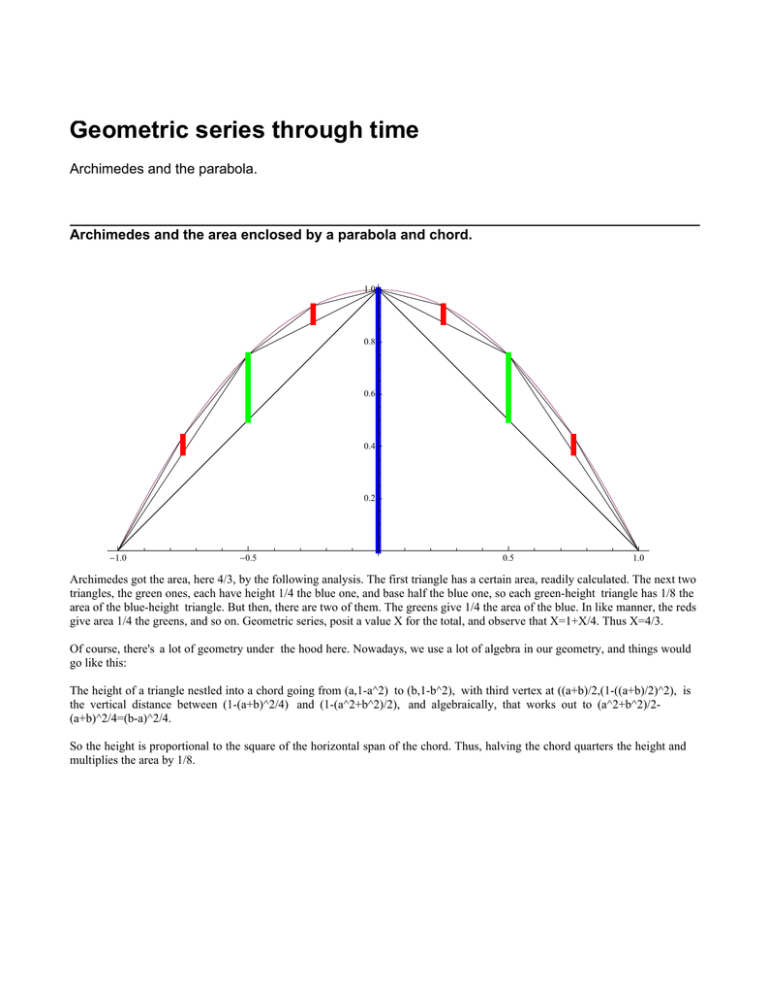
Geometric series through time Archimedes and the parabola. Archimedes and the area enclosed by a parabola and chord. 1.0 0.8 0.6 0.4 0.2 -1.0 -0.5 0.5 1.0 Archimedes got the area, here 4/3, by the following analysis. The first triangle has a certain area, readily calculated. The next two triangles, the green ones, each have height 1/4 the blue one, and base half the blue one, so each green-height triangle has 1/8 the area of the blue-height triangle. But then, there are two of them. The greens give 1/4 the area of the blue. In like manner, the reds give area 1/4 the greens, and so on. Geometric series, posit a value X for the total, and observe that X=1+X/4. Thus X=4/3. Of course, there's a lot of geometry under the hood here. Nowadays, we use a lot of algebra in our geometry, and things would go like this: The height of a triangle nestled into a chord going from (a,1-a^2) to (b,1-b^2), with third vertex at ((a+b)/2,(1-((a+b)/2)^2), is the vertical distance between (1-(a+b)^2/4) and (1-(a^2+b^2)/2), and algebraically, that works out to (a^2+b^2)/2(a+b)^2/4=(b-a)^2/4. So the height is proportional to the square of the horizontal span of the chord. Thus, halving the chord quarters the height and multiplies the area by 1/8. 2 archimedesgeometric.nb Under the hood: (click on menu to open closed cells). pix1 = Plot@80, 1 - x ^ 2<, 8x, - 1, 1<, AspectRatio -> AutomaticD 1.0 0.8 0.6 0.4 0.2 -1.0 -0.5 0.5 1.0
